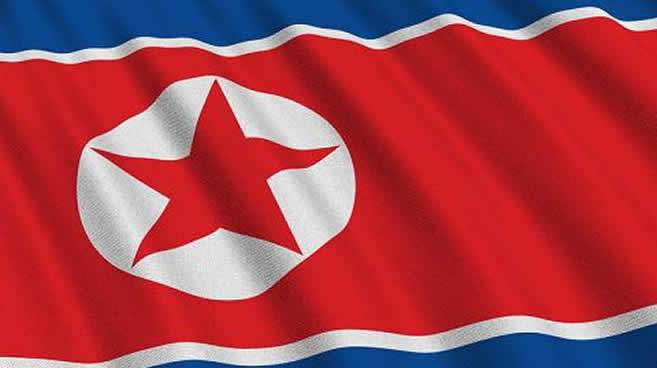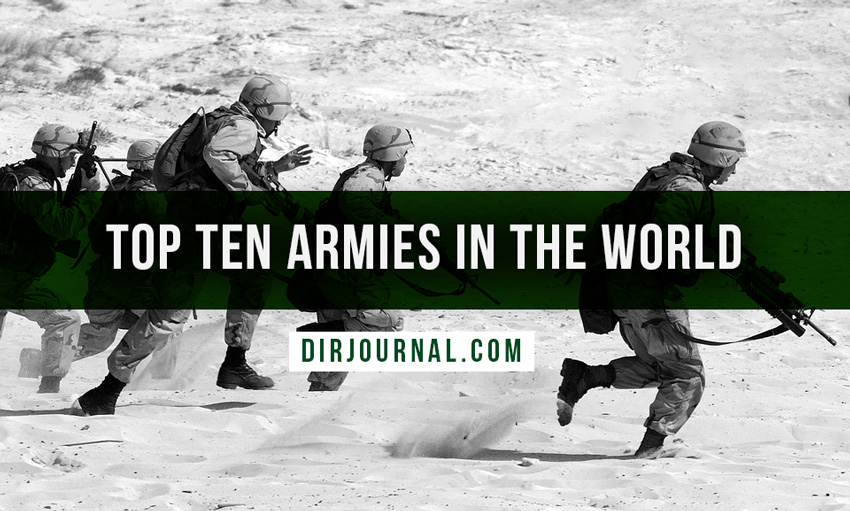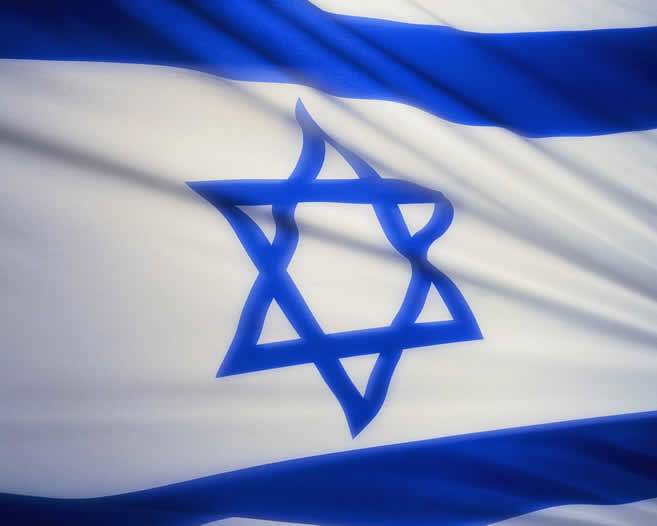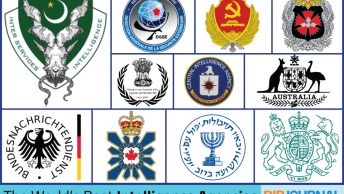There’s been much discussion and debate about our original article about the Top 10 Armies in the World. First written in 2010, we’ve been updating it ever since.
Nearly every country in the world has its own army to protect its interests against internal and external enemies. Most countries like to boast of their military prowess, often claiming to be one of the strongest in the world. Not all can actually back that claim with data and numbers
In an effort to quantify the rankings of the top military forces in the world, we analyzed data on over sixty countries. We based this on the most recent data available at GlobalFirepower. This includes the size of defense budget, number of active military members, tanks and armored vehicles, aircraft and helicopters, and number of naval craft.
Additionally, we considered nuclear capability and recent operations, the latter meaning that the army actually has live combat experience.
We then assigned a weight to each of these components, and finally calculated an overall score for each country. In most places, this differs from the country’s GlobalFirepower rank.
After the calculations were completed, the top ten armies in the world became easily visible as the most powerful militaries in the world.
Most of these armies were involved in the major conflicts of the modern world. Notably, these include World War I, World War II and the Korean War. Additionally, many were involved in conflicts fighting for their own country’s independence.
#10: Turkey

The Turkish Army dates back more than 2,000 years, though the modern day military branches were founded in 1920. With a force of over 730 and a budget of close to $19 billion, it is solidly in the top ten military powers in the world.
It ranks fourth on the list for tanks and armored vehicles, estimated at just over 11,000. Ground forces are additionally supported by an outsize artillery. Out of the nations on this list, Turkey is currently the only without nuclear capability.
With very few exceptions, military service is required of all male citizens after the age of twenty, contributing to the large force and reserve size. After the U.S. and ahead of France, it is the second largest ground force in NATO.
The Turkish Army was involved in the Korean War, recurrent internal Kurdish conflicts, the division of Cyprus, and recently Syria. Its largest conflict to date, however, was the Turkish Independence War. In this confrontation, it fought Russia, Britain, Greece, France and Italy along its borders. It was one of the few larger powers to remain neutral until almost the end of World War II.
#9: United Kingdom

The British Armed Forces were organized in 1661 and have been involved in various conflicts including the Napoleonic Wars, Revolutionary War and both world wars. In fact, only 22 countries in the world were never invaded by British forces.
The British Army has had a significant presence in Northern Ireland and the Balkans. It stood beside the United States in the Gulf War in the 1990s. The army is a powerful force in the ongoing Global War on Terrorism after the attacks of September 11, 2001.
The active duty force of the British military is over 190,000 strong, making it the second largest army in the European Union behind France. The U.K. has a defense budget of over $51 billion annually. Of the top ten military powers, it has the smallest number of active duty members but the fourth-largest budget, behind only the U.S., China, and India.
There are three branches of service. These are the Royal Navy, the British Army proper and the Royal Air Force, also known as RAF.
With nearly 750 aircraft and helicopters and around 5,500 tanks, armored vehicles, and artillery, it is a viable force and an unwavering ally of the United States.
#8: Pakistan

The Pakistan Armed Forces were founded in 1947, and comprises three service branches. It succeeded the former British Indian Army after the country gained independence the same year.
Pakistan’s military history includes recurrent conflicts with its bordering neighbors of Afghanistan and India, the Gulf War and Mogadishu, Somalia in the early 90s.
The country is part of the Islamic Military Counter Terrorism Coalition (IMCTC). As such, it has been active against ISIL and other terrorist groups. Pakistan has also served as an ally to the United States in the Global War on Terrorism. It assisted in the fight against both Taliban and Al-Qaeda in Afghanistan and along its borders.
At the same time, the army maintains close ties with the Chinese military.
This volunteer army consists of an active duty force of over 650,000 personnel. Additional reserve forces are another 550,000 strong. Together, they make the Pakistan Armed Forces into one of the largest armies in the world.
Pakistan’s defense budget is around $11.5 billion. This may be the smallest budget of the top ten military powers, but still far exceeds the defense budget of most other countries around the world.
While on par with U.K. for naval craft, Pakistan boasts several hundred more aircraft and helicopters, over 9,000 tanks and armored vehicles, and a much larger amount of artillery pieces.
#7: Israel
Israel maintains a conscript army. It is the only country in the world that requires military service from both male and female citizens with few exceptions.
The Israel Defense Forces (IDF) were founded in 1948, but trace their roots to several paramilitary organizations active against the British while they held Palestine. Today, the IDF maintains an active duty force of over 170,000. In comparison, its reserves are enormous, evaluated at around 450,000.
Its fleet is fairly small, but the IDF can field considerable airpower and over 13,000 tanks and armored vehicles.
The Israeli military history includes the Arab-Israel War, the Six-Day War and numerous conflicts with Lebanon, the annexed Palestine, and frequent operations against Iran. As a whole, it is one of the most battle-tested armies of the world.
The United States remains one of Israel’s largest and closest allies, giving the IDF preferential access to new military technology. Israel’s defense budget clocks in at fully $20 billion.
#6: France

Since its struggles during the World Wars, France does no longer enjoy the reputation of a military superpower. These perceptions aside, the numbers tell a different story.
France has a military of over 360,000 strong across the army, navy, air and space force and paramilitary branches. This makes it the largest army in the European Union by numbers. It is unique in letting foreign nationals serve in its forces – in the notorious and elite Foreign Legion. Unusually, the country’s police also form part of the French Armed Forces.
Compared to its one-time hereditary rival, the British Armed Forces, it commands more craft across almost all categories. The exception are some naval classes and artillery pieces. Its budget, however, is smaller than the U.K.’s, at $41 billion.
#5 North Korea

The North Korean People’s Army was established in 1939 and has an impressive size of more than 1,250,000 soldiers. When reserve unit numbers are added to this, estimates are more than seven million soldiers could be activated if needed. This makes the North Korean forces potentially the largest in the world.
Major conflicts in North Korea’s history are the Korean War and the Vietnam War. Tensions between North and South Korea still exist today. Technically, the conflict is a frozen one – it never officially ended between the two.
Its defense budget, at $1.6 billion, is nominally small. Much of its economy, however, is prepared for military use along a total war doctrine. Additionally, North Korea is a relatively close, though erratic, ally of China.
North Korea has confirmed its nuclear and chemical weapons capability in recent years with threats against various countries. This especially includes the United States, mainly for its alliance with South Korea. Over the last decade, it has also emerged as a cyber-war force to be reckoned with.
#4: India

The Indian Army’s roots go back, with only minor interruptions, to the Stone Age. Today, it is the largest all-volunteer ground force in the world with nearly 1.5 million active duty soldiers. Reserves make up a force an additional 2 million strong.
India has never had to institute a draft to staff its ground force. The Indian Army – overlapping with the British Indian Army – was active in both world wars. Subsequently, the Indian Armed Forces fought in conflicts for the country’s own independence. Border skirmishes with Pakistan are common in its history.
The Indian military consists of three branches as well as several paramilitary units, and operates on a budget of more than $61 billion. While its aircraft and helicopter as well as tank and armored vehicle numbers rank it solidly in the middle of the list, it has a relatively small naval fleet. India also has more than eighty nuclear warheads in its possession.
#3: Russia

Russia has undergone numerous changes throughout its military history. This history dates back all the way to 863. The modern day army – the Russian Ground Force – arose in 1992, following on the collapse of the Soviet Union.
Previous Russian military organizations, including the Red Army, saw combat in regional conflicts, both World Wars and numerous Cold War operations. Before the fall of the Soviet Union in 1991, it was one of two superpowers in the world. By this point, it had surpassed the United States both in terms of the number of soldiers and nuclear weapons.
The Russian Ground Force draws its soldiers through a military draft. In principle, all male citizens between the ages of 18 and 33 serve for a period of 12 months. There are, however, many reasons for exception and deferral, and bribery is common.
Russia currently has over 1.2 million active duty military members and 2 million in reserves. It operates under a comparatively slim budget of more than $48 billion dollars. In terms of finances, only India, China and the U.S. are bigger spenders. Though its air force and ground capabilities are larger than China’s, the latter has been gaining rapidly, and China possesses a larger navy.
Russia also has the largest number of nuclear warheads in the world – nearly 8,000. This stock, though, is aging, and not all of it is combat-ready.
#2: China

The People’s Liberation Army of China is the largest military in the world in absolute numbers. It numbers nearly 2.2 million soldiers, with a reserve over 500,000 strong. After significant cuts in forces a decade ago, numbers are again increasing.
The Chinese Army arose in 1927. It was active in the Sino-Japanese conflict, World War II, and the Korean and Vietnam wars.
While technically service is a necessity for all men over the age of 18, China has never had to draft soldiers. There have always been more than enough Chinese men who have volunteered for military service to their country.
It has the second largest defense budget, at nearly $240 billion – a full $100 billion more than a decade ago. This corresponds roughly to the combined budget of all previous countries on this list. It also houses nuclear weapons, with estimates putting the number at around 350.
#1: United States

The United States military’s history dates back to 1775, where it arose out of rebel forces fighting the Revolutionary War. With over 1.4 million on active duty, it now has the third largest active duty force ranking behind China and India.
However, the defense budget is what really sets the U.S. apart from all other countries on the list. With a budget of over $750 billion, it exceeds all other military budgets on this list combined by nearly $250 billion, and China’s by over $500 billion.
The U.S. Army and its special forces have participated in every major world war, the Korean War, Vietnam, the Gulf Wars, and leads the Global War on Terrorism.
The modern day Army is an all-volunteer force, though drafts have been used for long periods. It maintains numerous permanent posts throughout the United States as well as Germany, Italy, Kosovo, Japan, Korea, and other countries.
Ranking only behind Russia in the total number of warheads, the U.S. has the largest number of active warheads in the world.
The U.S. also has the largest number of aircraft and helicopters by far with just under 14,000. It’s still comfortably ahead of China in the number of tanks and armored vehicles. Its air dominance also shows in its fleet, which is smaller than China’s, but features numerous aircraft carriers and supporting craft.














